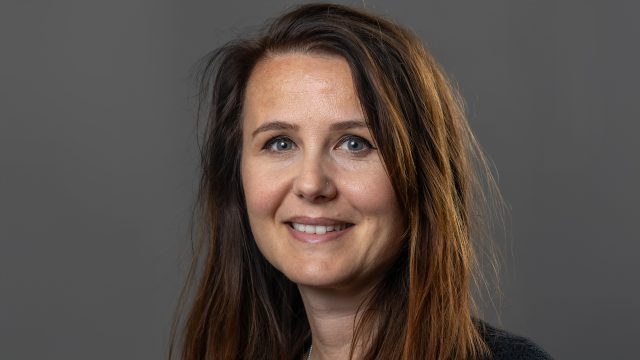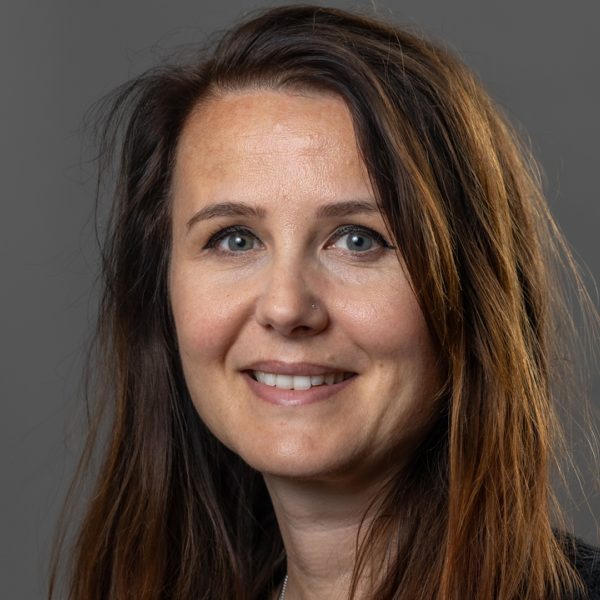Cancer, immunotherapy development, high resolution 3D imaging, organoid technology, bio-engineering

Our Focus
The Rios group develops new model systems and tailored microscopy technologies to advance cancer research and find new leads for therapy improvement. A key focus lies on understanding the dynamic mode-of-action of cellular immunotherapy, a promising class of treatment that harvests the patient’s own immune system to fight cancer. These cellular therapies essentially are ‘living drugs’ and we argue that to exploit their full clinical potential we need to better understand their living mode-of-action. To achieve this, we developed a live cell imaging platform (BEHAV3D) designed to record the functional behaviour of these cells. In addition, we invest in the development of human model systems that not only capture the diverse tumour characteristics and varying treatment responses as observed in patients, but that we also try to further advance by adding key components of the tumour microenvironment. The direct environment of the tumour, and especially local immune cells, are known to significantly impact treatment outcomes. With these advanced models we try to map these often detrimental interactions between the local immune cells, the tumour cells and the cells used to treat cancer. Through these efforts we aim to find new therapeutic targets to maximize treatment outcomes.
About Anne Rios
My Research
‘Visualize the unexpected’ is the driving force behind my science.
From the start of her scientific career, Anne developed an intense passion for imaging, which she applied during her PhD in developmental biology to unveil a novel developmental scenario by which migrating cells from adjacent tissues can trigger cell fate changes in muscle stem-cells (Nature, 2011). During her postdoc, she established a method to visualize intact tissue using 3D microscopic reconstruction (Neil Lawrence prize for most creative young scientist, 2016). The power of this method in driving scientific discovery is illustrated by the first in vivo evidence for bipotent stem cells in the mammary gland (Nature, 2014, Nature cell biology, 2017) and the unexpected finding of polyploid cells during lactation (Nature Communications, 2016). Moreover, it was optimized into a rapid and easy-to-use protocol for 3D imaging of entire organs, intact tumours and organoids (Cancer Cell, 2019 -highlighted Best of Cancer Cell 2019; Nature Biotechnology 2021; Nature Protocols 2019 & Nature Protocols, 2022). Combined with a novel multicolored single-cell 3D intravital imaging technique, this technique allowed for discovering a novel population of resident macrophages essential for maintaining breast homeostasis, as well as involved in breast cancer progression (Nature Cell Biology, 2020, Nature Protocols, 2021).
In 2017, Anne was recruited as a group leader to the Princess Máxima Center for Pediatric Oncology and head of the Princess Máxima Imaging Center. In 2019, she was also appointed Oncode junior principal investigator. She built a multidisciplinary team, with experts in bioengineering, imaging and computational science and together they study cancer biology and immunotherapy treatment response. Anne is a selected next generation member of the International Society for Stem Cell Research (ISSCR), a program committee member of the European Fight Kid Cancer funding agency and a founding member of the EMBO journal catalyst program. Anne received a European Research Council (ERC) Starting Grant and KWF high risk grant for her work on pediatric brain cancer, a CGC Young PI Award to study breast cancer dynamics and a St. Baldrick’s Robert J. Arceci Innovation Award recognizing her innovative approaches to tackle paediatric cancer research. In addition, Anne is a participating PI in multiple consortia dedicated to the next generation of T cell therapies, advancing organoid technology and further developing imaging and analytical frameworks to study and guide cells in their native environment. In 2021, she received the L’Oréal-UNESCO for Woman in Science Award and is now one of the founders of ACE (Authenticity in science for Community and Excellence) to promote women in science. In 2021, she was a honorary Fellow of NIAS-KNAW (Dutch royal Academy of Arts and Sciences) for 5 months, where she developed projects related to Art and Science. She has a strong passion for engaging the public (NWO Science Communication grant, 2002) and inspiring the future generation of scientists, which she aims to achieve through unique immersive displays of her group’s 3D imaging data.
Awards
2022: NWO Science Communication Grant: An unexpected alliance to portray cancer.
2022: Horizon Europe 2021 Marie Sklodowska-Curie Actions (MSCA) Cofund co-PI. From Caterpillar to BUTTERFLY: supporting transformation of DCs in a paediatric oncology network.
2022: Zwaartekracht consortium grant Imagine. Innovative. Microscopy and Guidance of Cells in their naïve environment.
2021: ODAS Foundation, consortium grant. Identify targets to modulate CAR-T cell functionality using advanced 3D co-culture and imaging technologies: Towards better survival of pediatric BCP-ALL patients.
2021: KWF Consortium Grant. Targeting human cancer with the next generation of engineered immune cells: TEGs.
2021: L’Oréal-UNESCO for Woman in Science Award
2019: St. Baldrick’s Robert J. Arceci Innovation Award
2018: ERC starting grant Deciphering and targeting the invasive nature of Diffuse Intrinsic Pontine Glioma
2018: Villa Joep Optimizing neuroblastoma resection using fluorescent guided surgery
2018: KWF high risk Unravelling the integration of pediatric high-grade glioma in the developing brain using state-of-the-art imaging
2018: CGC young PI award Studying human breast cancer dynamics using multi-coloured lineage tracing
2017: Cancer Genomic Center member
2016: Lawrence Creative Prize Winner Medical Innovation Award
2014: Walter and Eliza Hall Research Institute Post-Doctoral Award
2013: Postdoctoral Fellowship co-funded by the National Breast Cancer Foundation and Cure Cancer Australia Foundation
2011: Director’s Prize PhD award
Key Publications
Van Ineveld R.L., Collot R., …, Rios A.C. Multispectral confocal 3D imaging of intact healthy and tumor tissue using mLSR-3D (Nature Protocols, Dec. 2022)
Rios A.C. Resolving the spatial heterogeneity of cancer in 3D. (Nature Reviews Cancer, Tools of the Trade, Aug 2022)
Dekkers J.F., Alieva M., …, Rios A.C. Behavioral-transcriptomic landscape of engineered T cells targeting human cancer organoids (Nature Biotechnology, Jul 2022)
van Ineveld R.L., van Vliet E., Wehrens E.J., …, Rios A.C. 3D imaging for driving cancer discovery. Review. (EMBO J, Apr 2022)
van Ineveld R.L., Kleinnijenhuis M., …, Rios A.C. Revealing the spatio-phenotypic patterning of cells in healthy and tumor tissues with mLSR-3D and STAPL-3D (Nature Biotechnology, Jun 2021).
Dekkers J.F., …, Rios A.C. Long-term culture, genetic manipulation of human normal and breast cancer organoids. (Nature Protocols, Mar 2021).
Dawson C.A., …, Rios A.C. & Visvader J.E. Intravital microscopy of dynamic single-cell behaviour in mouse mammary tissue. (Nature Protocols, Mar 2021).
Wellens L.W., Deken M.M., …, Rios A.C. Anti-GD2-IRDye800CW as a targeted probe for fluorescence-guided surgery in neuroblastoma. (Scientific Reports, Oct 2020)
Dawson C.A., …, Rios A.C. & Visvader J.E. Tissue-resident ductal macrophages survey the mammary epithelium and facilitate tissue remodelling. (Nature Cell Biology, May 2020).
Dekkers J.F., …, Visvader J.E., Clevers H., Rios A.C. High-resolution three-dimensional imaging of fixed and cleared organoids. (Nature Protocols, Jun 2019)
Rios A.C., …, Visvader J.E. Intraclonal plasticity in mammary tumors revealed through Large-scale Single-cell Resolution 3D imaging. (Cancer Cell, Jun 2019
Rios A.C., Clevers H. Imaging organoids: a bright future ahead. Review. (Nature Methods, Jan 2018)
Rios A.C., Fu N.Y., Lindeman G.J. & Visvader J.E. In situ identification of bipotent stem cells in the mammary gland. (Nature, Feb 2014)
· Rios A.C., Marcelle C. & Serralbo O. Gene loss-of-function and live imaging in chick embryos. (Methods Molecular Biology, 2012)
Rios A.C., …, Marcelle C. Neural crest regulates myogenesis through the transient activation of NOTCH. (Nature, May 2011)
Members
| Anne Rios Group leader | Amber Wezenaar PhD Student | Amber Zeeman Technician |
| Britt Vervoort PostDoc | Celina Honhof Research Technician | Ellen Wehrens Senior researcher |
| Emma Bokobza Phd Student | Jessica Mazalo Postdoc | Mario Barrera Román Research Analyst |
| Marit Kruit Research Technician | Milo Molleson Computational analyst | Raphael Collot PhD student |
| Ravian van Ineveld Postdoc fellow | Rijndert Ariese Technician | Sam de Blank Bioinformatician |
| Uddeshya Pandey PhD student |
